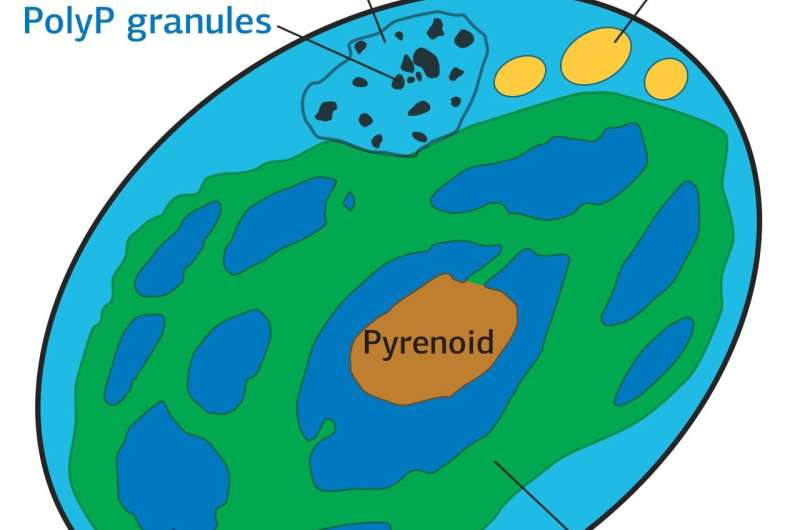Credit: RUDN University
RUDN University biologists studied how microalgae absorb phosphorus after a period of phosphorus deficiency, how the rate of cell division and the production of "internal reserves" of phosphorus in the form of polyphosphate granules changes. Results of the study can help in the development of biotechnological methods of wastewater treatment from phosphorus fertilizers. The study is published in the journal Algal Research.
Many microalgae that can store phosphorus can be used as fertilizers—they are able to extract nutrients from manure and sewage, reintroducing them into the cycle. Therefore, they are considered as a promising agent for biological pollution treatment systems, where bacteria are now mainly used. However, the processes of phosphorus assimilation in algae has so far been poorly studied.
Alexei Solovchenko, head of the laboratory of the Agrobiotechnological Department of RUDN University, investigated the accumulation of phosphorus in the cells of three strains of algae: Chlorella vulgaris (strains CCALA 256 and IPPAS C-1), and Parachlorella kessleri (strain CCALA 251).
In the first stage of the experiment, biologists studied how the algae are affected by phosphorus starvation. They grew a culture of algae in a phosphorus-free environment. The main marker of starvation was the termination of cell division. In addition, using NMR spectroscopy, the researchers monitored the reduction of reserves—phosphorus compounds and polyphosphate granules in cells.
In the second stage, biologists added inorganic phosphorus (Pi) to the "starving" cultures and fixed the rate of its absorption. Measurements have shown that there are two stages of absorption: fast (one to two hours) and slow (two to four hours). At the first stage, cell division has not yet resumed, but the phosphorus content has increased to 5 percent of the biomass of the cell. The content of polyphosphate granules begins to grow immediately after phosphorus is introduced into the medium and reaches its peak after six hours.
At the end of the rapid stage, cell division resumes, but the rate of phosphorus absorption is reduced by about 10 times. The content of polyphosphate granules in this phase remains at the same level, but starts to grow when cell division slows down and reaches the plateau stage—that is, the rate of cell division becomes approximately constant. Thus, intensive granule formation occurs after the cessation of "starvation," when cells create their reserves, and almost stops when cell division resumes, as phosphorus is spent on "construction."
Biologists analyzed the structure of the granules using X-ray spectroscopy and NMR. It turned out that it resembles a stranded cable—strands of polyphosphate combined in modules, stacked next to each other.
Previously, it was known that the VTC protein is responsible for the "laying" of polyphosphate granules in yeast. Alexei Solovchenko and his colleagues studied the expression of microalgae genes and found that the increased expression of one of the genes, similar to the genes of VTC proteins, is observed at the time of intensive synthesis of polyphosphate granules in algae cells. This means that VTC-similar proteins are involved in granule biosynthesis in green microalgae as well.
The researchers' data on phosphorus uptake will help in the creation of bioengineered strains of algae that can be used to treat wastewater from phosphorus pollution or to produce fertilizers.
More information: Alexei Solovchenko et al. Phosphorus starvation and luxury uptake in green microalgae revisited, Algal Research (2019). DOI: 10.1016/j.algal.2019.101651
Journal information: Algal Research
Provided by RUDN University
























